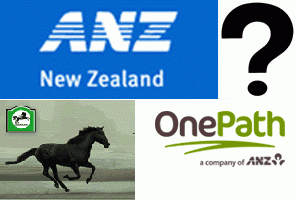
By Kevin Mitchelson
In KiwiSaver, consumers are spoilt for choice with more than 200 funds on the market.
In our aggressive classification of KiwiSaver funds, there are around 30 "multi-sector" funds that invest in a number of different types of assets, typically equities (both domestic and international), property, bonds and cash.
With this level of choice, it is a bit like trying to choose a breakfast cereal in a strange supermarket. You can spend a lot of time reading the small print to see what's actually in it. Or you can throw up your hands and be persuaded by the advertising.
So perhaps one shouldn't be surprised to find four seperately branded products and discover they are made in the same factory and have the same ingredients.
That is effectively the case with ANZ which markets the ANZ KiwiSaver Growth Fund, the National Bank KiwiSaver Growth Fund, the OnePath KiwiSaver Growth Fund, and, wait for it, the OnePath KiwiSaver SIL Growth Fund. No prizes for originality in naming awarded.
They are all managed by OnePath (NZ), the old ING, and they all have identical asset allocation guidelines.
One might assume that ANZ's four variety of aggressive funds are differentiated by investment strategy.
Here's what their individual investment statements say:




You can see why I didn't bother identifying which was which.
Upon closer inspection, you'll find they differ in a couple of important ways: fees, expenses and performance.
The ANZ, National Bank and OnePath SIL branded funds all charge a 1% management fee, but oddly the OnePath brand manages to get away with a 0.6% management fee. However it costs the ANZ, National Bank and OnePath branded funds around 0.25% per annum in additional expenses to get the job done, according to their March 2010 annual reports. Interestingly enough, it only costs OnePath SIL 0.02%. The administration fees differ too: the OnePath brand charges you $33 per year for administration whilst the others can do it for only $24.
Bottomline?
Unless you have less than roughly $5,500 in your "ANZ brand" growth fund, as far as fees and expenses go, the OnePath fund is the best option.
But it is it delivering on performance? Here is a table showing the size, performance and costs as at the end of December 2010.
'Published performance' is what the providers calculate performance to be after "included costs", namely manangement and trustee fees. Adjusted performance is interest.co.nz's performance calculation after taking account of "excluded costs" (expenses and the administration fee, assuming a $10,000 balance.) To read more about how performance is calculated, click here .
It seems rather odd that funds with the same investment strategies and manager have different fee structures and can produce different performance.
On a more general note, one has to ask why ANZ has gone to the trouble and expense (which investors end up picking up) of offering identical products?
And why is it not recommending that their customers, whose best interests they should have at heart, move to the best performing option?
-------------------------------------------------------------------------------------------------------------------------------------
Update
David Boyle, GM Funds Management, ANZ Wealth has been kind enough to respond as follows.
“It is important to note that the investment management style of the OnePath default scheme is different from the 3 other schemes we manage, that are designed for members who have made an active choice.
The default scheme is set up to deliver a lower cost solution to members who have not made an active enrolment choice. To achieve the lower cost in terms of the 0.60% management fee for Default members in a growth fund, the investment style is passive in two important asset allocations – global property and international equities - and there is no tactical asset allocation or active currency hedging.
While asset allocation proportions are similar across the four schemes, as you have mentioned, the total active management style of the growth fund for the SIL, ANZ and National Bank schemes does make a difference to overall performance. However the differences in performance between the actively managed schemes are minimal and these can be explained in terms of the different expenses and trustee fees (due to differing FUM size) of the bank schemes from the SIL scheme and also the timing of the contributions flowing into these funds. This timing is dependent on IRD release of funds.
ANZ Wealth offers these KiwiSaver schemes according to the needs of our customers in our various distribution channels. The award-winning SIL scheme is designed for those who have made an active enrolment choice and have a more hands-on attitude to investing. SIL is available through professional independent advisers or directly through OnePath. ANZ and National Bank KiwiSaver schemes are distributed through the bank channels and offer the highest quality and most appropriate solutions for our customers.”
So the upshot is that if you are in the OnePath scheme, the funds are managed less actively in some respects than the other schemes. Hence the lower fees and differing performance. If you were originally defaulted into the OnePath Conservative Fund and decided to change to the OnePath Growth Fund, you will still be considered to be a "Default member" and pay a lower fee and get a less active management style. To get a more active management style, you will need to switch schemes.

We welcome your comments below. If you are not already registered, please register to comment
Remember we welcome robust, respectful and insightful debate. We don't welcome abusive or defamatory comments and will de-register those repeatedly making such comments. Our current comment policy is here.